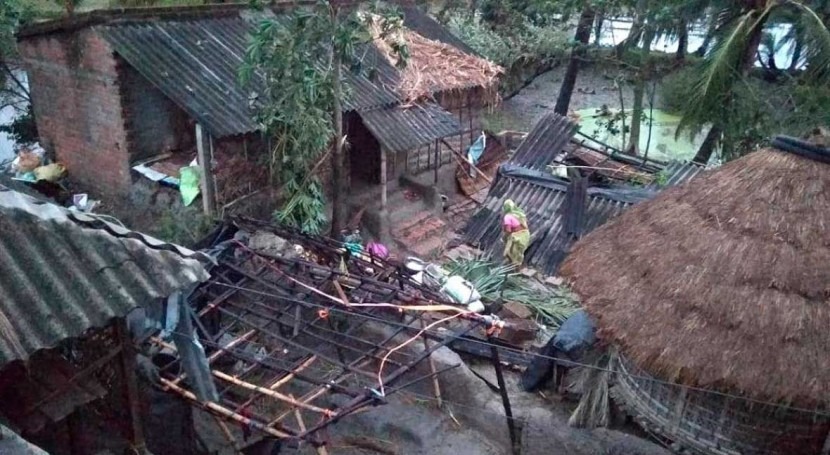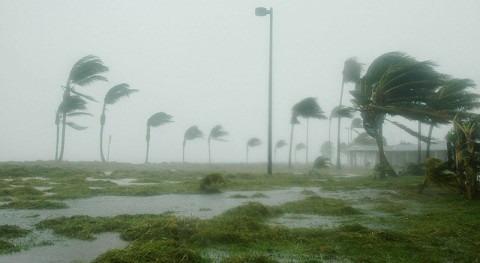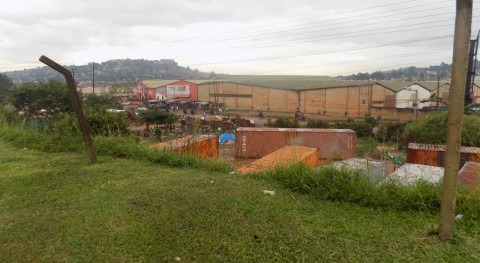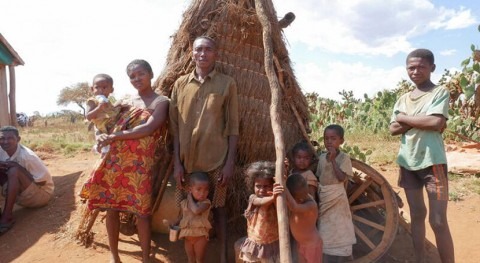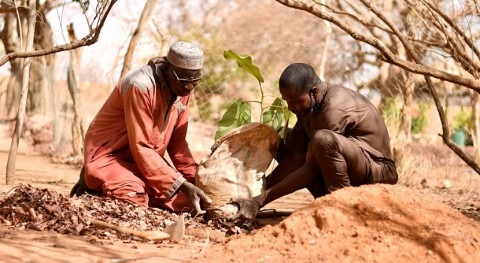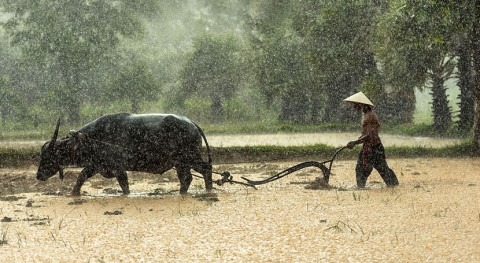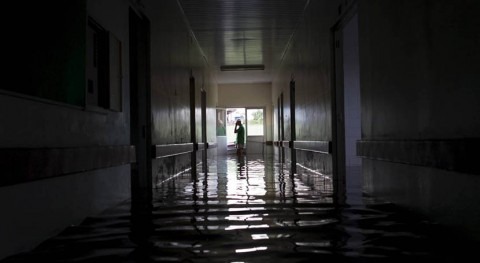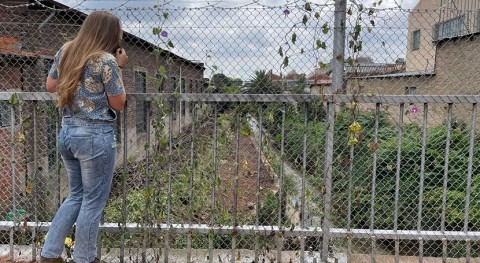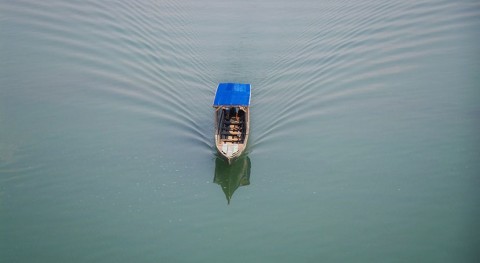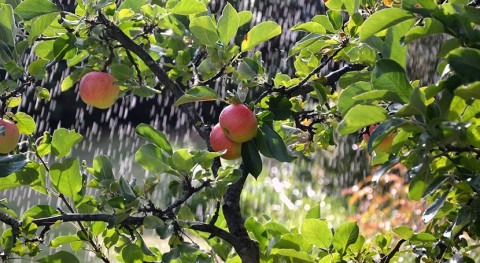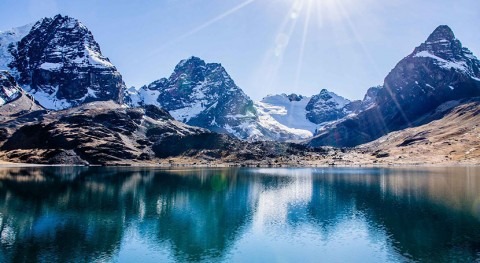Since a powerful cyclone tore through India's Sundarbans delta region last month, Radha Naskar has been forced to cycle half an hour each day to collect clean drinking water for her family.
Even then, the water she draws from the hand-pump has floating sediment and must be filtered before being consumed.
To save time and energy, the mother-of-two has been trying to strike a deal with a neighbour to use his pond for 100 rupees ($1.33) per month.
"All this when we have very little money to spend anyway," said Naskar, whose husband lost his job as a construction worker after India enforced a coronavirus lockdown in late March.
"You can fight one problem. But now they are multiple - no drinking water, no food, no roof over our heads or earnings," she said.
Ensuring enough water for everyone at home, including her brother and parents, was a major challenge, she added.
"It is so frustrating to carry on like this," she told the Thomson Reuters Foundation by phone from the Sundarbans district of South 24 Parganas in West Bengal state.
Naskar is one of millions of Sundarbans villagers grappling with acute water shortages after the most ferocious storm in more than a decade.
Cyclone Amphan swept away mud-and-thatch homes, breached embankments and swamped farms with salt water, making the land unfit for cultivation. Floods also contaminated ponds and groundwater - locals' main sources of water.
Villagers said hand-pumps were now spewing brackish water and ponds had turned black, reeking of dead fish and filth.
Kanai Haldar of the West Bengal Farm Labourer Committee said the ponds had previously been used for drinking water, washing clothes and utensils, taking baths and breeding fish.
The Sundarbans – meaning "beautiful forest" in local Bengali dialect - is a delta on the Bay of Bengal and the largest mangrove forest in the world, shared by India and Bangladesh.
Home to more than 4.5 million people, it is regarded as a climate-change hotspot, vulnerable to rising sea levels and fiercer storms as the planet warms.
The Sundarbans fell directly in the path of Cyclone Amphan, which struck on May 20 with heavy rains and wind gusts of up to 190 km per hour (120 mph).

A girl wades through muddy water to fetch drinking water in the Sundarbans, India, May 23, 2020. PHOTO/HANDOUT/Paschimbanga Khetmajoor Samity (West Bengal Farm Labourer Committee)
Shrinking island
In another part of the Sundarbans, villagers on the tiny island of Ghoramara have been scrambling not only for clean water but also a roof over their heads.
Amphan - the worst of three major cyclones to hit the island in a year - destroyed much of its drinking-water supply network, which was mostly hand-pumps drawing from aquifers.
Locals say the pumps were rendered unusable after salt water seeped into the ground. Now they trek for up to an hour to a hand-pump that draws water from a tube well.
Wind and rain also blew off most thatch and asbestos roofs.
The state government and charities sent food and tarpaulin sheets to locals, but without a solid roof, they fear it may be hard to weather the monsoon downpours expected in a few weeks.
One of 102 low-lying islands in the Sundarbans, Ghoramara - like several others - has been shrinking as seas rise.
Now measuring 4.6 sq km (1.8 sq miles), it has nearly halved in size over the past two decades, according to village elders. The population has dropped to 4,900 from about 9,000 a decade ago.
Cyclone Amphan washed away more than 160 km of river embankments across the Sundarbans, officials said.
Residents say flooding has been getting worse, threatening their homes and livelihoods.
Sugato Hazra, a professor at the School of Oceanographic Studies at Jadavpur University, attributed the rising frequency and intensity of storms to climate change.
A cyclone in 2009 left similar destruction, triggering mass migration of people to cities seeking steady work and shelter.
The islanders' lives are tied to a vulnerable ecosystem.
They have only a few job opportunities, from farming and fishing to betel-leaf growing and tourism - all of which have become harder to sustain with more extreme and erratic weather.
"We are still clinging to this place but certainly pushed to the edge," said Sanjib Sagar, a Ghoramara village council member. "Eventually, this island will be an abandoned one."

Women villagers protest in the Sundarbans, India, June1, 2020. PHOTO/HANDOUT/Paschimbanga Khetmajoor Samity (West Bengal Farm Labourer Committee)
Betel-leaf relief
India's nationwide coronavirus lockdown has shut many businesses and limited movement, complicating recovery from the cyclone's damage.
The Farm Labourer Committee staged a state-wide protest on June 1, with hundreds of members banging empty tin plates to denote hunger and carrying placards saying: "We want to stay in our villages. We want jobs. We want food."
West Bengal's chief minister announced an initial aid allocation of 10 billion rupees to rebuild houses, river embankments and water supply networks, and to clean ponds.
The federal government announced another 10 billion rupees to help repair the cyclone damage.
West Bengal state has also promised a minimum 100 days of work a year to villagers under a government jobs scheme.
Bankim Hazra, a state legislator who represents Ghoramara, said the coronavirus and cyclone were a double blow to local livelihoods.
"Every household exhausted whatever little savings they had," he said.
The storm damaged valuable betel leaf crops that many islanders depend on for a living, he added.
The leaf is mostly used in "paan" - wrapped around a mixture of areca nut, spices and tobacco - to aid digestion and refresh palates.
Authorities have announced financial aid of 5,000 rupees for each betel leaf-growing family.
Agriculture officials said advance cyclone warning allowed farmers to harvest about 60% of their standing crops, but the rest were submerged or flattened by gusting winds.
Altogether, the storm damaged more than 1 million hectares (2.4 million acres) planted with crops and vegetables.
S.P. Sinha Ray, head of the Centre for Ground Water Studies in Kolkata, said sustainable development and water management were major challenges in the Sundarbans.
Freshwater aquifers were too deep to access at 400 metres and rooftop rainwater harvesting was impossible since most houses have asbestos, tin or thatched roofs, he said.
But desalinisation of shallow groundwater sources and cleaning of ponds and water bodies with safe-to-use chemicals could help locals get water for daily needs, he added.
Authorities are also looking into solar-powered water pumps across North 24 Parganas district.
But for Ankan Mondal, a villager on Kumirmari island in the Sundarbans, those ideas sound like a pipedream while his community needs more water right now, despite the local council delivering some in barrels and pouches.
"With so many hand-pumps not working and ponds contaminated, we are facing acute hardships," he said.


